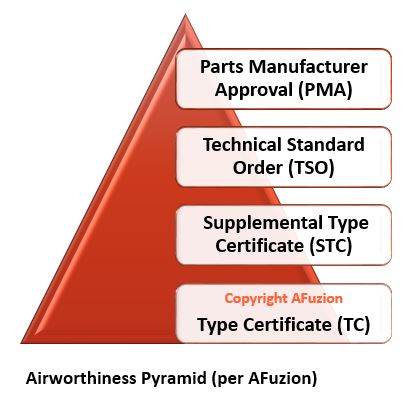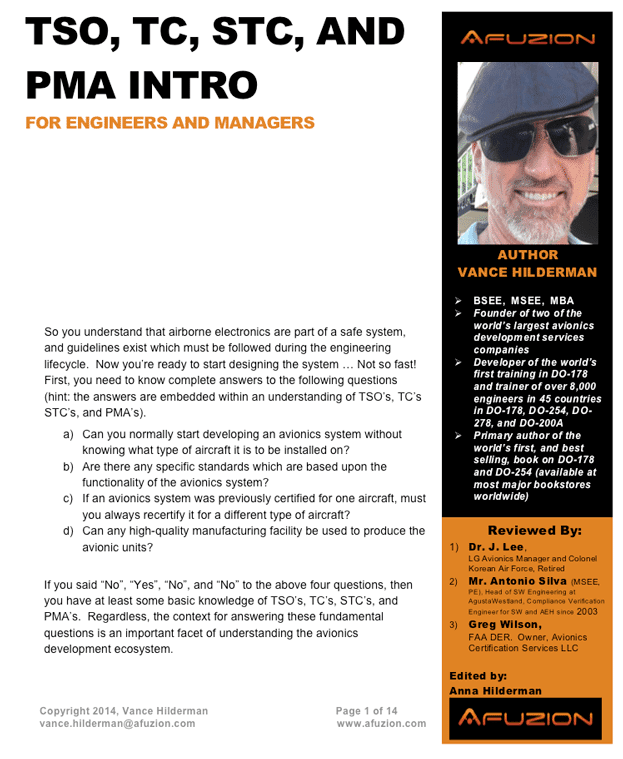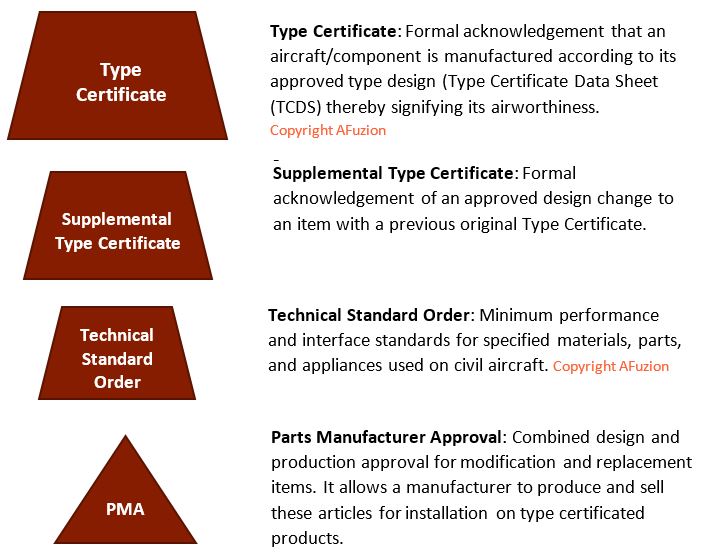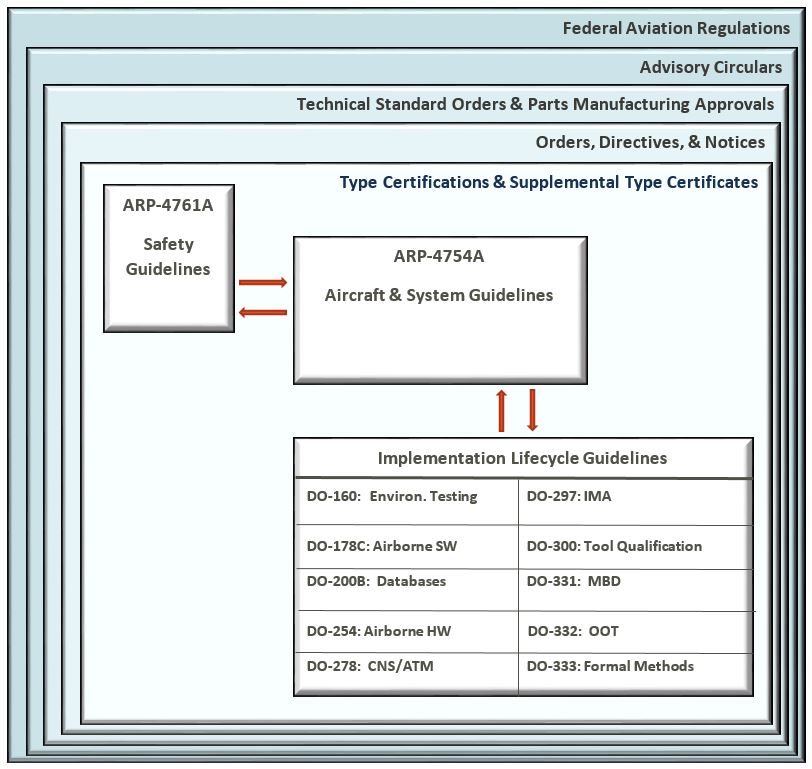TSO, TC, STC, and PMA for Avionics
Download Full 10+ Page TSO, TC, STC, AND PMA Whitepaper
The avionics development ecosystem is an alphabet soup of acronyms. Learn how to decipher Technical Standard Orders (TSO), Type Certificates (TC), Supplemental Type Certificates (STC), and Parts Manufacturer Approval (PMA). This primer showcases the true avionics development ecosystem.
For Engineers & Managers
So you understand that airborne electronics are part of a safe system, and guidelines exist which must be followed during the engineering lifecycle. Now you’re ready to start designing the system … Not so fast! First, you need to know complete answers to the following questions (hint: the answers are embedded within an understanding of TSO’s, TC’s STC’s, and PMA’s).
a) Can you normally start developing an avionics system without knowing what type of aircraft it is to be installed on?
b) Are there any specific standards which are based upon the functionality of the avionics system?
c) If an avionics system was previously certified for one aircraft, must you always re-certify it for a different type of aircraft?
d) Can any high-quality manufacturing facility be used to produce the avionic units?
If you said “No”, “Yes”, “No”, and “No” to the above four questions, then you have at least some basic knowledge of TSO’s, TC’s, STC’s, and PMA’s. Regardless, the context for answering these fundamental questions is an important facet of understanding the avionics development ecosystem.
For commercial avionics, safety of flight is paramount. Perhaps nowhere in the avionics ecosystem is the interdependence of those safety aspects seen via an Airworthiness Pyramid with four building blocks, as depicted below:


And just like a pyramid, the airworthiness pyramid has a foundation with subsequent blocks placed upon each other. First, what is “airworthiness”?
“Airworthiness” is the provable ability for an aircraft to operate safely while performing predefined functionality. When airworthiness is proven for a commercial aircraft, an airworthiness certificate may be granted. The FAA defines an airworthiness certificate to be an “FAA document which grants authorization to operate an aircraft in flight” (www.faa.gov). To receive an airworthiness certificate, FAA Order 8130 states that both of the following two conditions must be met:
- The aircraft must conform to its type design. Conformity to the type design is considered attained when the aircraft configuration and the engine, propeller, and articles installed are consistent with the drawings, specifications, and other data that are part of the TC. This includes any supplemental type certificate (STC) and repairs and alterations incorporated into the aircraft.
- The aircraft must be in a condition for safe operation. This refers to the condition of the aircraft relative to wear and deterioration, for example, skin corrosion, window delamination/crazing, fluid leaks, and tire wear , and any outstanding airworthiness directives (AD’s).
The Airworthiness Pyramid thus has the following four building blocks, summarized below with more detailed explanations to follow:

Airworthiness Pyramid So the Airworthiness Pyramid has four essential, integrated building blocks which are discussed in more detail below.

Remember: The Avionics Development Ecosystem
Remember, in avionics development it is all about the “ecosystem”. Here again is a pictorial view of the key aspects of that ecosystem. Which aspect is most important? Yes, they all are. Like a chain, the system is only as strong as the weakest link.

The Details: TC’s, STC’s, TSO’s, and PMA’s …
First, what is the formal regulatory basis for aircraft and avionics certification? The fundamentals are contained in Title 14 of the US Code of Federal Regulations (CFR) Aeronautics and Space, Parts:
- 21 (Certification Procedures for Products and Parts)
- 23 (Airworthiness Standards: Normal, Utility, Acrobatic, and Commuter Category Airplanes)
- 25 (Airworthiness Standards: Transport Category Airplanes)
- 27 (Airworthiness Standards: Normal Category Rotorcraft)
- 29 (Airworthiness Standards: Transport Category Rotor Craft) and the applicable amendment levels which typically define the primary basis for certification)
For the remaining 11 pages of this AFuzion whitepaper, please download freely below:
Download Full 10+ Page TSO, TC, STC, AND PMA Whitepaper



